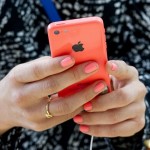 Designing a logo is simple, right? Think again. There’s more to crafting a brand’s visual identity than just placing a name in a square and calling it a day. Logo designers are in high demand, and it’s for good reason — a logo is often a company’s first impression, one that can impact a customer’s brand perception, purchase decisions and overall attitude toward a product.
Designing a logo is simple, right? Think again. There’s more to crafting a brand’s visual identity than just placing a name in a square and calling it a day. Logo designers are in high demand, and it’s for good reason — a logo is often a company’s first impression, one that can impact a customer’s brand perception, purchase decisions and overall attitude toward a product.
We live in a society painted with brand logos. Even toddlers who can’t yet tie their own shoelaces recognize many logos or are able to deduce what a company sells just by looking at its brandmark.
For those who are about to embark on a brand design journey, or think it’s time for their company’s visual identity to undergo a face lift, Mashable asked some some design experts to provide tips on creating a great logo.
1. Be unique and clever
A logo is what helps distinguish a brand from its competitors, so it’s important that the image stands out from the rest — something many brands struggle with.
In many cases, imitation is the best form of flattery — with logo design, this is not the case.
“What’s important is to create something that you believe is different from anything already out there,” David Airey, a graphic designer and creator of website Logo Design Love says. “It’s highly unlikely (some say impossible) that what you create will be original, but that should be the goal.”
Deborah Harkins, creative director at crowdsourced design website 99designs, reiterates the risk of plagiarism. “Once something appears online, there’s simply no way to guarantee it won’t be used in some shape or form in another forum.” Designers who are unsure of the originality of their design can actually check for plagiarism on sites such as Logo Thief.
Creating a unique design isn’t all about avoiding imitation, but also about designing something out-of-the-box. It’s tempting to just throw an industry icon on the page, but it’s important to think creatively. “The Mercedes logo isn’t a car. The Virgin Atlantic logo isn’t an airplane. The Applelogo isn’t a computer,” Airey notes in his book.
2. Understand the brand
Yes, a logo is an image, but it’s also an introduction to a brand. The logo must reach a specific audience and when designing, you must keep this in mind. Write down what you think about the brand; perhaps even create a mood board with imagery that reminds you of the brand’s ideology — check out websites like Niice for some inspiration. But be wary of becoming inspired by only aesthetics rather than deeper meaning. “Researching other visual brands can be helpful, but designers need to be careful not to take the inspirations too literally,” Harkins says. “Any design work must be original and map directly back to your client’s unique brand attributes.”
Is the brand utility-driven or is it more focused on evoking emotion? Is it contemporary or quirky? What does the customer care about, and what does the brand aspire to be? While it is helpful to stay up to date on design trends, it’s more vital to stay true to a brand’s overarching personality.Here’s a quick brand personality evaluation that can help you along the way.
More than anything, know what your logo means. Every logo has some kind of a history, filled with meaning and purpose. Take Apple, for instance — the fruit is missing a “byte.” Or Wikipedia, an unfinished globe of puzzle pieces covered with glyphs from different writing systems. Both logos are simple, but have an added twist that circles back to brand ideology.

Harkins echoes the importance of understanding the brand. “Since a logo is the brand’s visual keystone — the most concise expression of its personality — an honest approach to defining its DNA is imperative to a successful result.”
3. Color is key

When taking the brand’s personality into account, you have to think about every aspect of the image. Bright and bold colors may grab someone’s attention, but could also seem brash; muted tones exude sophistication, but could be overlooked. Every color has a different implication and can bring nuance to your message — don’t fall into the trap of conveying the wrong message because of a simple brush stroke. The Logo Company released an article “The Science Behind Colors” and an infographic displaying The Psychology of Color in Logo Design. Here’s a quick break-down:
-
Red: energetic, sexy, bold
-
Orange: creative, friendly, youthful
-
Yellow: sunny, inventive, optimism
-
Green: growth, organic, instructional
-
Blue: professional, medical, tranquil, trustworthy
-
Purple: spiritual, wise, evocative
-
Black: credible and powerful
-
White: simple, clean, pure
-
Pink: fun and flirty
-
Brown: rural, historical, steady
Read more: 7 Killer Tips for Logo Design















